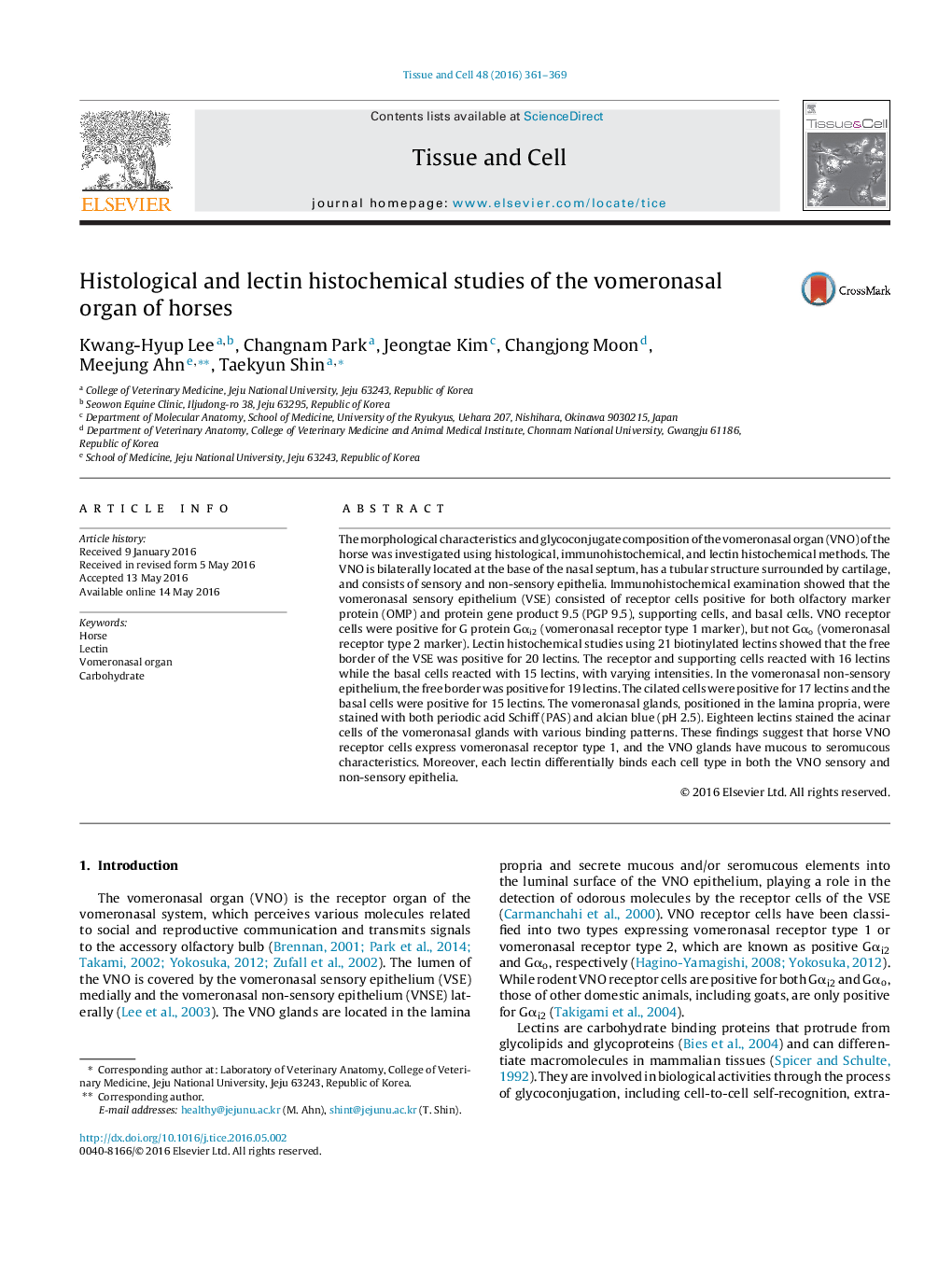| کد مقاله | کد نشریه | سال انتشار | مقاله انگلیسی | نسخه تمام متن |
|---|---|---|---|---|
| 2203491 | 1402215 | 2016 | 9 صفحه PDF | دانلود رایگان |
• The vomeronasal organ (VNO) of horse consist of the sensory and non-sensory epithelium with VNO glands.
• The VNO sensory epithelium consisted of both olfactory marker protein- and PGP9.5-positive receptor cells, supporting cells and basal cells.
• The VNO sensory receptor cells are G protein Gαi2 positive vomeronasal receptor type 1.
• A variety of carbohydrate residues are recognized in the VNO sensory and non-sensory epithelium and Bowman’s glands.
The morphological characteristics and glycoconjugate composition of the vomeronasal organ (VNO) of the horse was investigated using histological, immunohistochemical, and lectin histochemical methods. The VNO is bilaterally located at the base of the nasal septum, has a tubular structure surrounded by cartilage, and consists of sensory and non-sensory epithelia. Immunohistochemical examination showed that the vomeronasal sensory epithelium (VSE) consisted of receptor cells positive for both olfactory marker protein (OMP) and protein gene product 9.5 (PGP 9.5), supporting cells, and basal cells. VNO receptor cells were positive for G protein Gαi2 (vomeronasal receptor type 1 marker), but not Gαo (vomeronasal receptor type 2 marker). Lectin histochemical studies using 21 biotinylated lectins showed that the free border of the VSE was positive for 20 lectins. The receptor and supporting cells reacted with 16 lectins while the basal cells reacted with 15 lectins, with varying intensities. In the vomeronasal non-sensory epithelium, the free border was positive for 19 lectins. The cilated cells were positive for 17 lectins and the basal cells were positive for 15 lectins. The vomeronasal glands, positioned in the lamina propria, were stained with both periodic acid Schiff (PAS) and alcian blue (pH 2.5). Eighteen lectins stained the acinar cells of the vomeronasal glands with various binding patterns. These findings suggest that horse VNO receptor cells express vomeronasal receptor type 1, and the VNO glands have mucous to seromucous characteristics. Moreover, each lectin differentially binds each cell type in both the VNO sensory and non-sensory epithelia.
Journal: Tissue and Cell - Volume 48, Issue 4, August 2016, Pages 361–369
